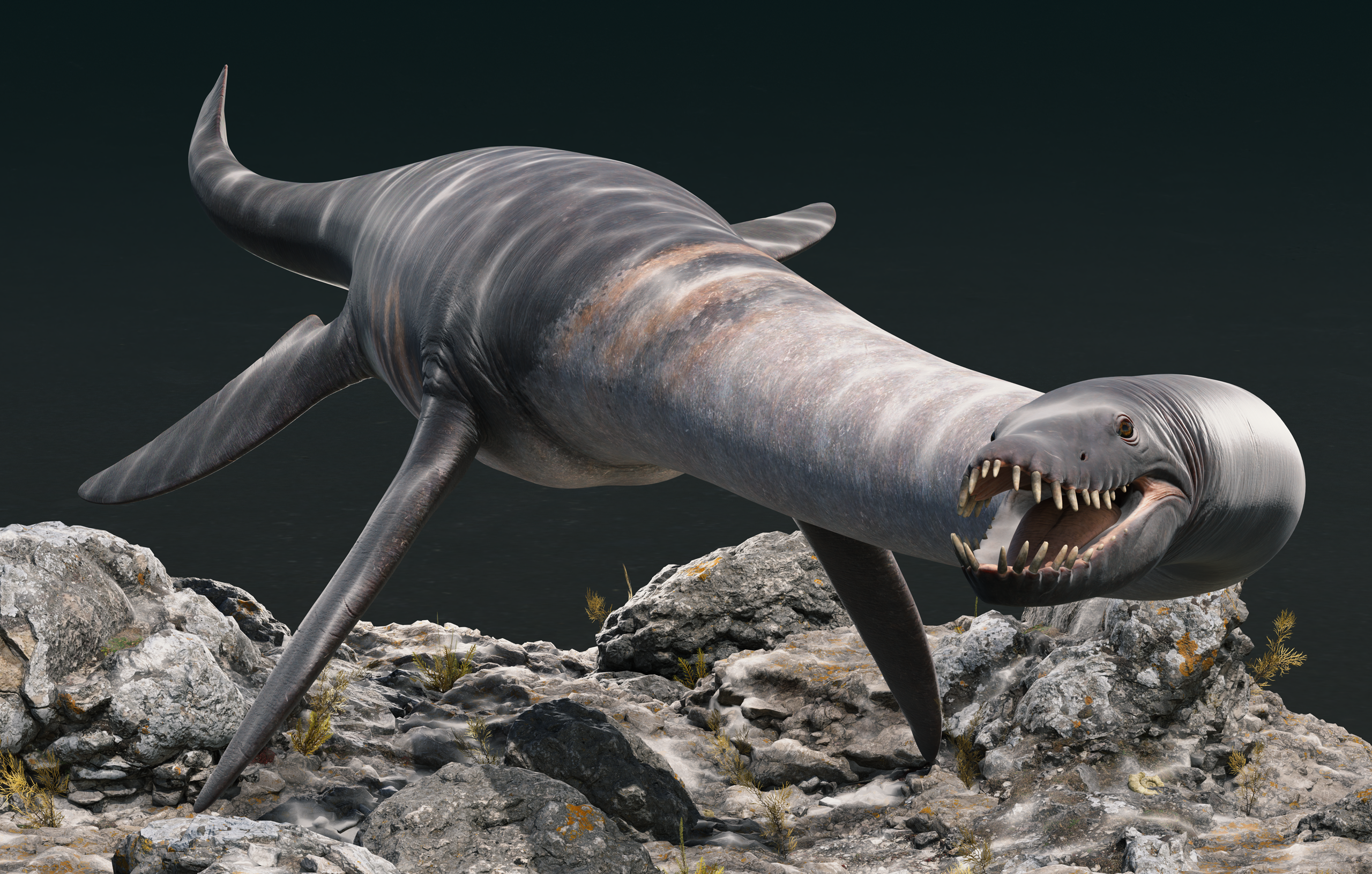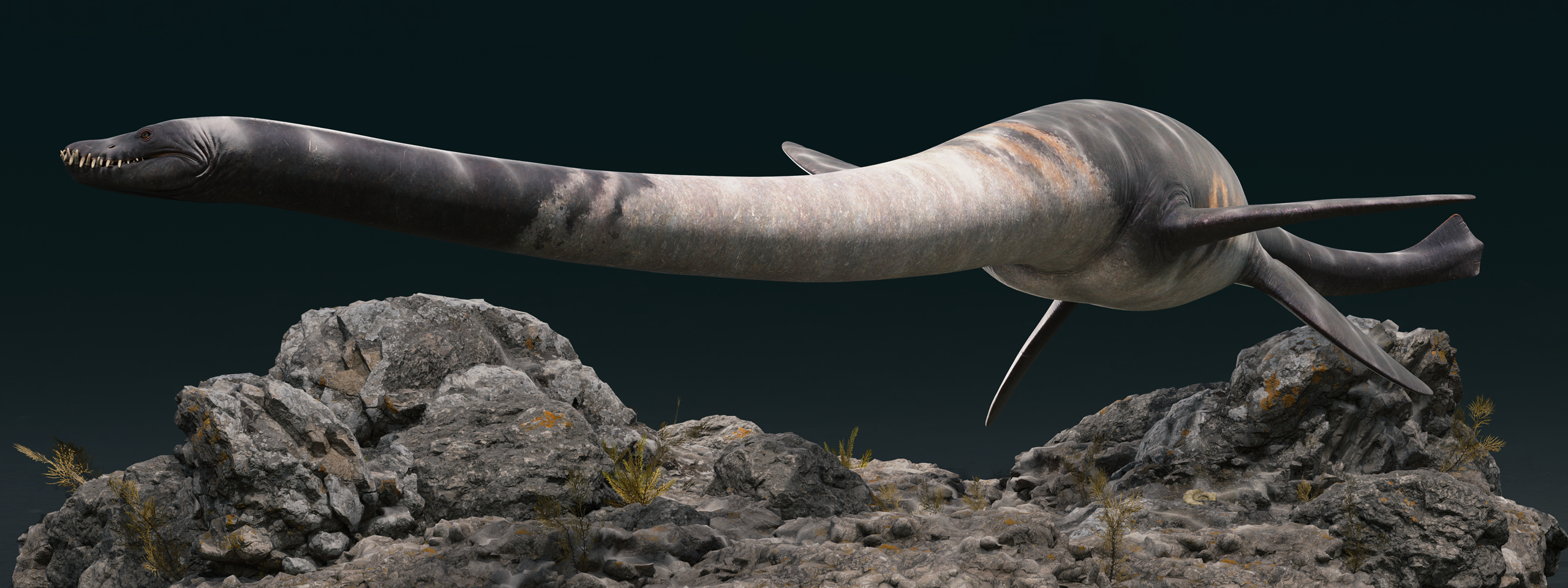The Stygian Snake-Neck
This marine reptile, named after the River Styx in Greek Mythology and its modern counterpart in Kansas, had a very long neck, even by plesiosaur standards, which it might have used to snake its way into shoals of fish.
Overview: With some exceptions, plesiosaurs are typically known for their long necks. But in the Late Cretaceous, one group of plesiosaurs, the elasmosaurids, developed extremely long necks, even by plesiosaur standards, and among them was Styxosaurus, discovered at the end of the 19th Century, named for the River Styx in Greek mythology. Styxosaurus was a predator of small fish and cephalopods and was in turn likely preyed upon by a variety of large predators including sharks and mosasaurs which shared the Western Interior Seaway with Styxosaurus and its kin.

Discovery: Styxosaurus is known from several specimens from the Niobrara Formation and Pierre Shale of Kansas, South Dakota, and Manitoba. The holotype (original) specimen was discovered in Kansas near a river called Hell Creek (not to be confused with the Hell Creek Formation of Montana, South Dakota, North Dakota, and Wyoming). It was first described by Samuel Wendell Williston in 1890, and the genus was named in 1943 by Samuel Paul Welles. Styxosaurus is Greek, meaning “River Styx Lizard”. The River Styx in Greek mythology was a supernatural river that flowed through the Greek underworld (Hades/Hell). The name Styxosaurus is a thinly veiled reference to the Hell Creek in Kansas where the bones were found.

Evolution, Description, and Ecology: Styxosaurus was a plesiosaur of the family Elasmosauridae. Plesiosaurs typically had long necks, small heads, compact turtle-like bodies, short tails and four large paddle-like flippers. Elasmosaurids fit this description but differed from other plesiosaurs in having even longer necks, typically over half their total body length from snout to tail! Styxosaurus had a total length of 10.5 meters (34 ft) and a neck length of 5.25 meters (17.2 ft). It weighed about 2.3 tonnes (2.5 tons). The teeth of Styxosaurus were long and conical for snagging and holding small slippery prey, namely fish, squid, and bellemnites (squid-like cephalopods common in the Mesozoic Era). Food was swallowed whole and probably ground up in the stomach by gastroliths (stomach stones). Gastroliths are stones swallowed by an animal which then sit in the animal’s stomach. A complete skeleton of Styxosaurus discovered in South Dakota had about 250 gastroliths in its chest cavity, and it is hypothesized that these were used either for ballast or for grinding food. The latter hypothesis, though rare in predators, is the favored hypothesis. Styxosaurus lived between 85 and 80 million years ago in the Western Interior Seaway, a body of water that connected the Arctic Ocean to the Gulf of Mexico and stretched from Utah in the west to Kansas in the east. This sea was also home to a number of other large animals, including other plesiosaurs, giant sea turtles, sharks, mosasaurs, and the giant predatory fish Xiphactinus. Sharks, mosasaurs and possibly Xiphactinus would have been predators of plesiosaurs like Styxosaurus, and there was no shortage of species of these fearsome marine marauders. In fact, the Western Interior Seaway has been considered one of the most dangerous seas of all time, nicknamed “Hell’s Aquarium” in the 2003 BBC documentary Chased by Sea Monsters. So Styxosaurus would have always had to alert, lest one of these predators catch it unawares.
Extinction and Legacy: Styxosaurus disappeared around 80 million years ago, probably replaced by other similar elasmosaurids like Hydrotherosaurus which lasted until the end of the Cretaceous. Today, Styxosaurus can be found at museums such as the Kansas University Natural History Museum, in Lawrence, Kansas, USA, which houses the holotype (KUVP 1301), and the SDSMT Museum of Geology in Rapid City, South Dakota, USA, which houses the complete specimen with the gastroliths (SDSMT 451). Styxosaurus appeared in the 2007 National Geographic documentary Sea Monsters: A Prehistoric Adventure. It’s similar but more famous relative Elasmosaurus has appeared in other media including the 2003 BBC documentary Chased by Sea Monsters.
Styxosaurus FAQ
Styxosaurus size / How big was Styxosaurus?
See weight and length.
Styxosaurus weight / How much did Styxosaurus weigh?
Styxosaurus probably weighed around 2.3 tonnes (2.5 US tons)!
How long was Styxosaurus?
Styxosauruswas about 10.5 metres (34 ft) long, half of which was its neck!
What did Styxosaurus eat?
Styxosaurus was ate fish and cephalopods.
What is Styxosaurus’s closest living relative?
Styxosaurus was a plesiosaur, which in turn were part of the clade Sauropterygia, whose evolutionary relationships are not well-understood, though some analyses suggest turtles may be their closest living relatives.
Styxosaurus family members / Styxosaurus family / What kind of animal was Styxosaurus?
Styxosaurus was a plesiosaur in the family Elasmosauridae, typified by their extremely long necks.
Where did Styxosaurus live? / Where was Styxosaurus found?
Styxosaurus lived in an inland seaway which split North America down the middle and connected the Arctic Ocean to the Gulf of Mexico. Its fossils have been found in Kansas, South Dakota, and Manitoba.
When did Styxosaurus live?
Styxosaurus lived around 85–80 million years ago during the Late Cretaceous Period.
What does Styxosaurus mean? / Styxosaurus name meaning
Styxosaurus means “River Styx Lizard”, named after the River Styx in Greek mythology, and alluding to a river called Hell Creek near which its fossils were found.

